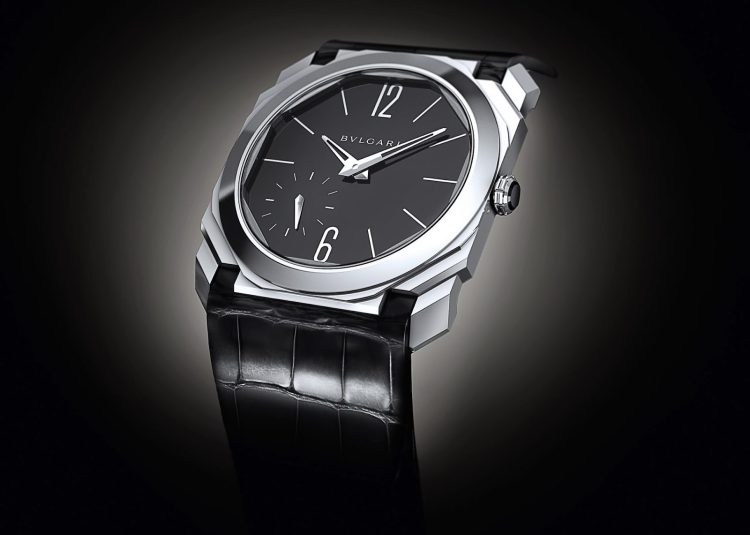The Emergence of Fashion and Jewelry Brands in Watchmaking
Chanel’s Ambition in the World of Horology
In a private room within Chanel’s extensive space at Watches & Wonders last April, Frédéric Grangié and Arnaud Chastaingt sat with an air of tranquility. Outside, the world’s largest watch fair was abuzz with energy as the press, retailers, and VIP clients flocked to catch a glimpse of the latest creations from various brands, including the industry’s giants. In Switzerland, unlike during Paris Fashion Week where Chanel reigns supreme, the maison’s iconic logo doesn’t guarantee attention. Here, it must compete with horological powerhouses like Patek Philippe and Rolex, which have dominated the landscape for centuries with their coveted models. However, Grangié, Chanel’s watch and fine jewelry president, and Chastaingt, director of its Watchmaking Creation Studio, remain undeterred. They believe that Chanel’s unique perspective, combined with its rich fashion history and focus on craftsmanship, gives it an edge in the world of high – end watchmaking.
Chanel’s Innovative Watch Creations
Chanel entered the watch domain in 1987 and has since become a pioneer in innovation and creativity. The J12 X – Ray, introduced in 2020, was the first timepiece with a case and bracelet made of clear sapphire crystal. This material, usually used to cover watch dials, is so hard that it can only be machined with diamond – tipped tools and is extremely costly and difficult to produce. While other high – end watch brands like Hublot, Richard Mille, and Bell & Ross (in which Chanel has a stake) had used the material for special cases, the J12 was the first with a sapphire – crystal bracelet. Chanel followed up this year with a pink sapphire crystal version, which was even more challenging due to the need to maintain color consistency in the limited edition of 12. Chanel, along with other fashion and jewelry houses such as Bulgari, Van Cleef & Arpels, Hermès, and Louis Vuitton, is elevating its watchmaking game, posing a threat to traditional watch brands.
The Changing Landscape of Luxury Watchmaking
The Evolution of Watches in Luxury Brands’ Portfolios
Watches used to be an afterthought for luxury brands expanding their lifestyle offerings. At jewelry houses, they were either for male clients buying gifts or a mass – marketing tool. But with the rise of social media attracting a new generation of watch enthusiasts, especially during the pandemic, luxury houses started taking watchmaking more seriously. They saw the potential in enhancing design and technical movements and increased their investments. This has led to some of the most creative and challenging watchmaking in Switzerland, although collectors have been slow to recognize it.
The Intense Competition for Horological Excellence
The race for headline – grabbing horological achievements has become fierce, with creations that seem almost unbelievable. Take the competition between Bulgari and Piaget, two jewelry – based houses, over the thinnest and most complicated timepieces. Piaget set a new standard in 2018 with the Altiplano Ultimate Concept, the world’s thinnest mechanical watch at 2 mm thick. But four years later, Bulgari’s Octo Finissimo Ultra slimmed down to 1.8 mm thick, despite having 170 components and 50 hours of power reserve. Some may consider it a gimmick, but this achievement gave Bulgari an edge over elite watchmakers. Fabrizio Buonamassa Stigliani, Bulgari’s product creation executive director, recalls the early days of the Octo Finissimo and how they challenged the executive team to develop more complex pieces. Using their in – house manufacture, they capitalized on their ability to create ultrathin watches and used the record – setting story to boost their watch business.

The Creative Drive and In – House Expertise of Brands
Van Cleef & Arpels’ Artistic and Technical Mastery
The drive to bring exciting and original watches to the market has spurred a flood of new ideas, often from unexpected sources. Van Cleef & Arpels, for instance, combines its 118 – year jewelry expertise with intricate automaton wristwatches and clocks. Unlike many traditional watchmakers, Van Cleef leads with design and storytelling, using technical development to bring its imaginative ideas to life. Since 2006, it has been creating complex automaton timepieces. The Brise d’Été, for example, features a field of grass and violets that seem to sway in the wind, with butterflies indicating time on a retrograde scale. Nicolas Bos, former global president and CEO of Van Cleef & Arpels, notes that these watches are not only poetically beautiful but also technically complex. Van Cleef spent seven years developing table clocks with similar concepts on a larger scale, like the Automate Fée Ondine. Rainer Bernard, Van Cleef’s director of research and development, says that the brand’s fantastical ideas drive new mechanical achievements, leading to patents and museum – worthy pieces like the Planétarium, a magnificent table clock with rotating jeweled planets and a melody.
Brands’ Strategies for In – House Production and Expansion
To create these advanced timepieces, brands are strengthening their in – house teams. When Bernard joined Van Cleef in 2011, there were only four people in the watchmaking vision team; now, there are 20. Many luxury labels are also acquiring Swiss manufactures or investing in smaller independent brands with expertise. Bulgari was an early adopter, purchasing Gérald Genta and Daniel Roth in 2000. Buonamassa Stigliani, who joined shortly after, emphasizes the importance of these acquisitions for Bulgari’s watchmaking growth. In – house production gives brands exclusivity and attracts discerning collectors. Chanel has also made strategic acquisitions, including G&F Châtelain in 1993 and stakes in other brands like Kenissi, Bell & Ross, Romain Gauthier, F. P. Journe, and MB&F. Grangié says that Chanel’s approach is similar to its couture business, working with multiple métiers.
The Role of LVMH and the Battle for Manufactures
Louis Vuitton’s Watchmaking Success under LVMH
LVMH is also a major player in this luxury watchmaking competition. In 2011, it acquired La Fabrique du Temps, an atelier that creates timepieces for Louis Vuitton, Gérald Genta, and Daniel Roth. This has enabled Louis Vuitton to produce some of its most inventive watches, like the Tambour Opera Automata, a $580,000 automaton watch with a retrograde – minutes and jumping – hours function. Jean Arnault, director of watches at Louis Vuitton, has impressed collectors with his attention to detail. The Tambour and Escale lines are attracting collectors who appreciate finesse and a more traditional look. The brand is trying to shift its image from a fashion house to a legitimate collector – watch maker.
The Rivalry over Vaucher Manufacture
Hermès, another luxury brand, is also making waves in watchmaking. This year, it introduced the Arceau Duc Attelé, a remarkable piece combining a triple – axis tourbillon with a minute repeater. The latest industry rumor involves Hermès and LVMH vying to buy Vaucher, an elite Swiss manufacture known for high – quality watch movements and components. Hermès has had a 25 percent stake in Vaucher since 2006, but now both are reportedly competing for full ownership. The winner could gain significant leverage in the industry.
The Future of Luxury Watchmaking and the New Era Ahead
As luxury brands continue to develop their watchmaking capabilities through acquisitions and investments, they pose a challenge to the traditional watchmaking industry. Chanel sees this as an opportunity to push boundaries, believing it’s a win – win situation. However, established watchmaking houses may face a threat from the creativity of fashion – and jewelry – focused brands backed by Swiss horological experts. Some traditional houses, like Patek Philippe, are adapting by targeting younger clientele. Chanel, on the other hand, is forging ahead with ambitious plans. With both traditional and fashion – forward brands innovating, we may be on the cusp of a new and remarkable era in luxury watchmaking.
















































